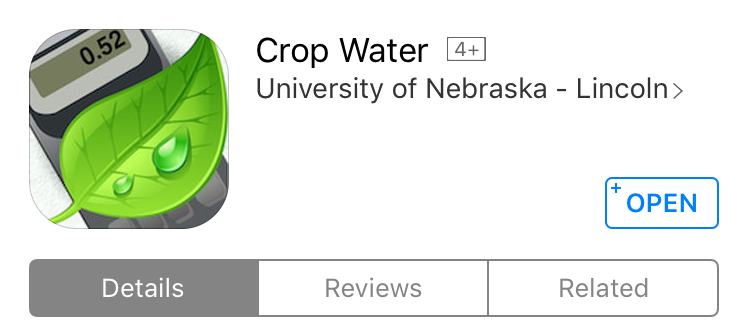CropWater App

The UNL Cropwater App is an excellent tool for a producer who utilizes Watermark soil moisture sensors in their field to aid in irrigation scheduling. Here is a brief overview of how to use this app in your operation.
Once you download the app you can open it and enter the field name you are currently working in. You can then tap the arrow on the screen and the app will use the devices GPS to input the coordinates of the sensors in the field. The GPS Location will also aid you in locating your sensors in the field when you go to read or remove them at the end of the growing season.
The producer will then select their soil texture from the dropdown list. Once the soil texture is selected it will tell you the available water holding capacity for the soil in inches per foot. Next select the number of sensors you are using at this location. You can then enter your sensor readings and select your Allowable Water Depletion percentage.
As a rule of thumb, during the growing season the 50% allowable water depletion is used to avoid yield loss. Irrigators with an older system prone to break downs or are on electric load control may want to select 30 or 40% depletion as a target. Touch the calculate button and total water available and total water depleted will both be calculated. These readings can then be saved to your device to be viewed later. The app also has the ability to graph the data to view trends throughout the growing season.
The newest feature that has been incorporated into the app is prediction of the last irrigation. When this option is selected you can enter the crop, and growth stage and the app will give you the predicted maturity date and water needed to finish out the crop. This can be stored soil moisture, rainfall, or irrigation.
This is a free app available for both Apple and Android platforms, with the Apple version available on the App Store for iOS devices at the following link, http://go.unl.edu/tkht,and the Android version available on Google Play at the following link, http://go.unl.edu/hkg.
This article was reviewed by Chuck Burr & Aaron Nygren
Sign up for updates from UNL Water
